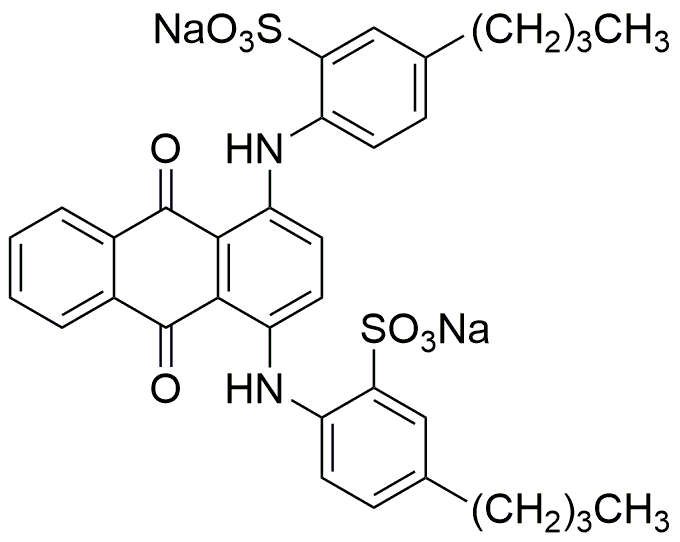Acid green 27 is widely utilized in research focused on:
- Dyeing and Pigmentation: Commonly used in textile industries, it provides vibrant green hues to fabrics, ensuring colorfastness and durability.
- Biological Staining: Employed in laboratories for staining biological specimens, enhancing the visibility of cellular structures under a microscope.
- Environmental Monitoring: Used as a tracer in water studies to monitor pollution levels and assess the dispersion of contaminants in aquatic environments.
- Cosmetic Formulations: Incorporated into personal care products for coloring, offering a safe and appealing option for consumers looking for vibrant cosmetic solutions.
- Research and Development: Serves as a model compound in studies related to dye chemistry and photochemistry, aiding researchers in developing new materials with improved properties.
General Information
Properties
Safety and Regulations
Applications
Acid green 27 is widely utilized in research focused on:
- Dyeing and Pigmentation: Commonly used in textile industries, it provides vibrant green hues to fabrics, ensuring colorfastness and durability.
- Biological Staining: Employed in laboratories for staining biological specimens, enhancing the visibility of cellular structures under a microscope.
- Environmental Monitoring: Used as a tracer in water studies to monitor pollution levels and assess the dispersion of contaminants in aquatic environments.
- Cosmetic Formulations: Incorporated into personal care products for coloring, offering a safe and appealing option for consumers looking for vibrant cosmetic solutions.
- Research and Development: Serves as a model compound in studies related to dye chemistry and photochemistry, aiding researchers in developing new materials with improved properties.
Documents
Safety Data Sheets (SDS)
The SDS provides comprehensive safety information on handling, storage, and disposal of the product.
Product Specification (PS)
The PS provides a comprehensive breakdown of the product’s properties, including chemical composition, physical state, purity, and storage requirements. It also details acceptable quality ranges and the product's intended applications.
Certificates of Analysis (COA)
Search for Certificates of Analysis (COA) by entering the products Lot Number. Lot and Batch Numbers can be found on a product’s label following the words ‘Lot’ or ‘Batch’.
*Catalog Number
*Lot Number
Certificates Of Origin (COO)
This COO confirms the country where the product was manufactured, and also details the materials and components used in it and whether it is derived from natural, synthetic, or other specific sources. This certificate may be required for customs, trade, and regulatory compliance.
*Catalog Number
*Lot Number
Safety Data Sheets (SDS)
The SDS provides comprehensive safety information on handling, storage, and disposal of the product.
DownloadProduct Specification (PS)
The PS provides a comprehensive breakdown of the product’s properties, including chemical composition, physical state, purity, and storage requirements. It also details acceptable quality ranges and the product's intended applications.
DownloadCertificates of Analysis (COA)
Search for Certificates of Analysis (COA) by entering the products Lot Number. Lot and Batch Numbers can be found on a product’s label following the words ‘Lot’ or ‘Batch’.
*Catalog Number
*Lot Number
Certificates Of Origin (COO)
This COO confirms the country where the product was manufactured, and also details the materials and components used in it and whether it is derived from natural, synthetic, or other specific sources. This certificate may be required for customs, trade, and regulatory compliance.


